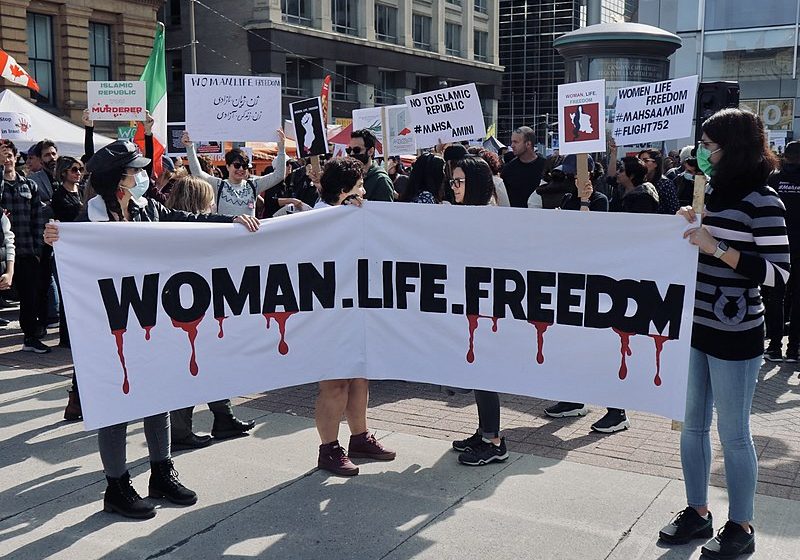Australia/Israel Review
Essay: Allies of Convenience or Birds of a Feather?
Apr 28, 2021 | Oved Lobel

Iran and the Houthis
The popular framing of Iran’s relationship with the Houthis of Yemen is that it is recent, tactical and wholly a reaction to Saudi Arabia’s overt intervention in Yemen’s evolving conflict.
Iran’s alliance with the Houthis, the name of a large tribe that has become synonymous with the Yemeni Shi’ite militia officially called Ansar Allah (“Partisans of God”), is simply a low-cost method of bogging down the Saudis, according to most analysts. This alliance lacks the ideological foundations and command-and-control undergirding Iran’s relationship with proxies like Hezbollah in Lebanon and the key Shi’ite militias in Iraq, it is argued.
In this narrative, the alliance itself is often blamed on the Saudis, who intervened in Yemen precisely to prevent the Houthis becoming a Yemeni Hezbollah and thereby supposedly made it so, driving the Houthis into Iran’s arms out of desperation for a patron.
As for the conventional Houthi origin story, it is said to be an outgrowth of the Zaydi Shi’ite revival movement in Yemen in the 1990s, itself partially a reaction to the government-sanctioned and Saudi-sponsored spread of radical Sunni Salafism into Zaydi territory. The Zaydi, sometimes referred to as “Fiver Shi’ites”, are a distinct branch of Shi’ite Islam far closer to Sunni jurisprudence than to the preponderant “Twelver” Shi’ism governing Iran.
In this telling, because of fundamental ideological differences, the Zaydi would never subordinate themselves to the Supreme Leader of Iran under the framework of Wilayat al-Faqih (“Guardianship of the Jurisprudent”), the governing ideology of the Islamic Republic of Iran that renders its clerical ruler a supranational sovereign over all Muslims. Rather, this narrative says, the Houthis, as Zaydis, were merely responding to social and economic grievances and threats to their practices and traditions when they began their escalating rebellion against the government of President Ali Abdullah Saleh in 2004.
Even now, when the Houthis are clearly waging jihad to conquer Yemen, analysts tend to assert that the group aims to re-establish the brutal, theocratic Zaydi Imamate that periodically “ruled” – insofar as such a word can ever be used in Yemen – parts of the Arabian Peninsula for a millennium up until 1962. This Imamate, unrelated to Ayatollah Ruhollah Khomeini’s pan-Islamic conception promulgated following the 1979 Iranian revolution, was predicated on absolute rule of Sayyids – descendants of the Prophet Mohammed. It is this, rather than Khomeini’s Wilayat al-Faqih, which the Houthis are supposedly trying to re-institute.
I recently re-examined these assumptions in a report published by European Eye on Radicalization titled “Becoming Ansar Allah: How the Islamic Revolution Conquered Yemen,” which collated open-source information on the chronological evolution of the Houthi movement and its connections to Iran. What I found was that, contrary to the narratives presented above, there is strong circumstantial evidence that the rise of the Houthis is a direct outgrowth of Khomeini’s 1979 Islamic Revolution and that Iran has cultivated the Houthi family and its associates since that date.
CIA and media reports of active Khomeinists in Yemen during the early 1980s don’t mention the names of those involved – during the Cold War, the spread of the Islamic Revolution was not a priority and was overshadowed by Soviet-backed groups. However, these reports clearly refer to Badr al-Din al-Houthi – the patriarch of the family – as well as his sons and associates.
In 1979, Badr al-Din travelled to Iran to visit and congratulate Khomeini. Eventually, he and his sons would settle in Iran, on and off, throughout the 80s and 90s. The first Iranian revolutionary organisation in Yemen was founded in 1982, morphing into the Union of Believing Youth around 1986 with Badr al-Din’s intimate involvement. By the late 1980s, Yemenis had begun warning the Government of his activities.
In the early 1990s, the Union of Believing Youth evolved into the Assembly of Believing Youth, with an accompanying political wing, Hizb al-Haqq, represented by Badr al-Din’s son Hussein Badreddin al-Houthi and his loyalist friend Abdullah al-Razzami, both of whom later became the leaders of the insurgency that began in 2004. At around the same time, reports began to appear of Lebanese and Iraqi Shi’ites travelling to Yemen and establishing Twelver learning centres.
In 1992, the Assembly of Believing Youth became the Believing Youth, named after an eponymous organisation in Lebanon that evolved into a core component of Hezbollah, through the work of Muhammed Izzan and Abdul-Karim Jadban, Houthi associates with deep connections to Hezbollah and the Iranian regime, which in turn guided them through transplanting Hezbollah’s evolutionary model to Yemen.
Believing Youth indoctrination centres were established across Zaydi territory, where materials included lectures by Hezbollah Secretary-General Hassan Nasrallah and the group’s “spiritual godfather” Mohammed Hussein Fadhlallah. As a consequence, the Houthis and their associates running the Believing Youth were essentially excommunicated by the most prominent Zaydi religious leaders for undermining and warping the faith. A 2005 US diplomatic cable describes the Believing Youth ideology as “‘homemade’ Twelver Shia.”
Simultaneously, Hussein al-Houthi and his brother Abdul-Malik, the current leader of the Houthis, settled in Iran’s most important religious centre of Qom, where Hussein reportedly grew very close to Iran’s Supreme Leader Ali Khamenei and adopted the pan-Islamic ideology of Khomeini, not the Zaydi Imamate, as his primary philosophical and political point of reference.
Hussein allegedly began travelling to Syria and Iran during the 1990s looking for support to immediately establish Hezbollah in Yemen, but the Iranians opted for a more gradual evolution.
In 1999, Hussein travelled to Sudan, then the operational base for Iran’s Islamic Revolutionary Guard Corps (IRGC) and its proxies, where he was almost certainly trained and tasked with his mission. Upon his return to Yemen, Hussein orchestrated a schism in the Believing Youth, likely at Iran’s behest; his faction came to be known as Ashab al-Shiar, or Followers of the Slogan. That slogan is the current Houthi motto, which is an appropriation and expansion of Iran’s own: “God is Great! Death to America! Death to Israel! A Curse Upon the Jews! Victory to Islam!”
There is anecdotal evidence that between 2001-2004, Hussein’s faction began preparing ammunition depots and fortifications for their planned jihad, having built up a strong insurgent base through social and charitable activities and indoctrination through the Believing Youth “summer camps.”
The Sept. 11 terrorist attacks and subsequent “War on Terror” saw President Saleh – himself a Zaydi – side with the US. As part of its overall goal to bog down and undermine the US throughout the Middle East, Iran unleashed Hussein’s faction of the Believing Youth against the putatively pro-American Saleh, instigating a war that would only end in 2010.
The “Arab Spring” that swept through the region in 2011 and deposed Saleh allowed for the next stage of the Houthis’ evolution. Since the name Hezbollah was already taken, the Houthis adopted one of Hezbollah’s cover names, “Ansar Allah”, and began their jihad to conquer Yemen.
Thousands of IRGC advisers and Iraqi and Lebanese proxies flooded into the country to train and oversee Ansar Allah and its operations, with Iranian support escalating across the board from 2011 through 2020 – including granting the Houthis sophisticated drone and missile capabilities and underground facilities that parallel those of Hezbollah in Lebanon.
Iran recently dispatched Hassan Irlu, an IRGC officer with long-standing ties to the Houthi leadership, to oversee the Ansar Allah project as Iran’s “ambassador” to Yemen, although his function in reality is Islamic military governor. Ansar Allah, under Iranian tutelage, has established an almost exact replica of Iran’s revolutionary regime organs. More and more statements from Iranian officials and Houthi leaders demonstrate that Ansar Allah has become a full-blown member of Iran’s “axis of resistance” – including overt Houthi threats against Israel, as well as Houthi persecution of the Baha’i faith and their long-standing goal of ethnically cleansing Yemen of its few remaining Jews.
Chronologically, Saudi Arabia intervened in response to the Iran-instigated Houthi jihad, not vice versa. As for being a local Zaydi revival movement, the Houthis and their associates were in fact virtually excommunicated by the traditional Zaydi religious leadership for their attempts to instill pan-Islamic and Khomeiniist doctrine among Zaydi youth.
There is clear evidence that the Houthis look to Iran’s Islamic Revolution and Hezbollah, not the Zaydi Imamate, as their political and ideological model, and that the Houthi family’s deep connections with the revolutionary Shi’ite clerics across the Middle East date back to 1979. Since 2011, they have become completely intertwined militarily with Iran’s other proxies from Iraq to Lebanon, even reportedly fighting in Syria.
What this means in practice is that, like its progenitors in Iran, Ansar Allah is a supranational revolutionary movement, and its officials have explicitly asserted their goals are pan-Islamic conquest, not just a traditional Zaydi Imamate in Yemen. Unless this fanatical ideology crashes into a much stronger military force, it will continue its expansion.
While the catastrophic humanitarian situation in Yemen must be addressed, this will remain impossible without a peace process that has Ansar Allah’s defeat at its core.






